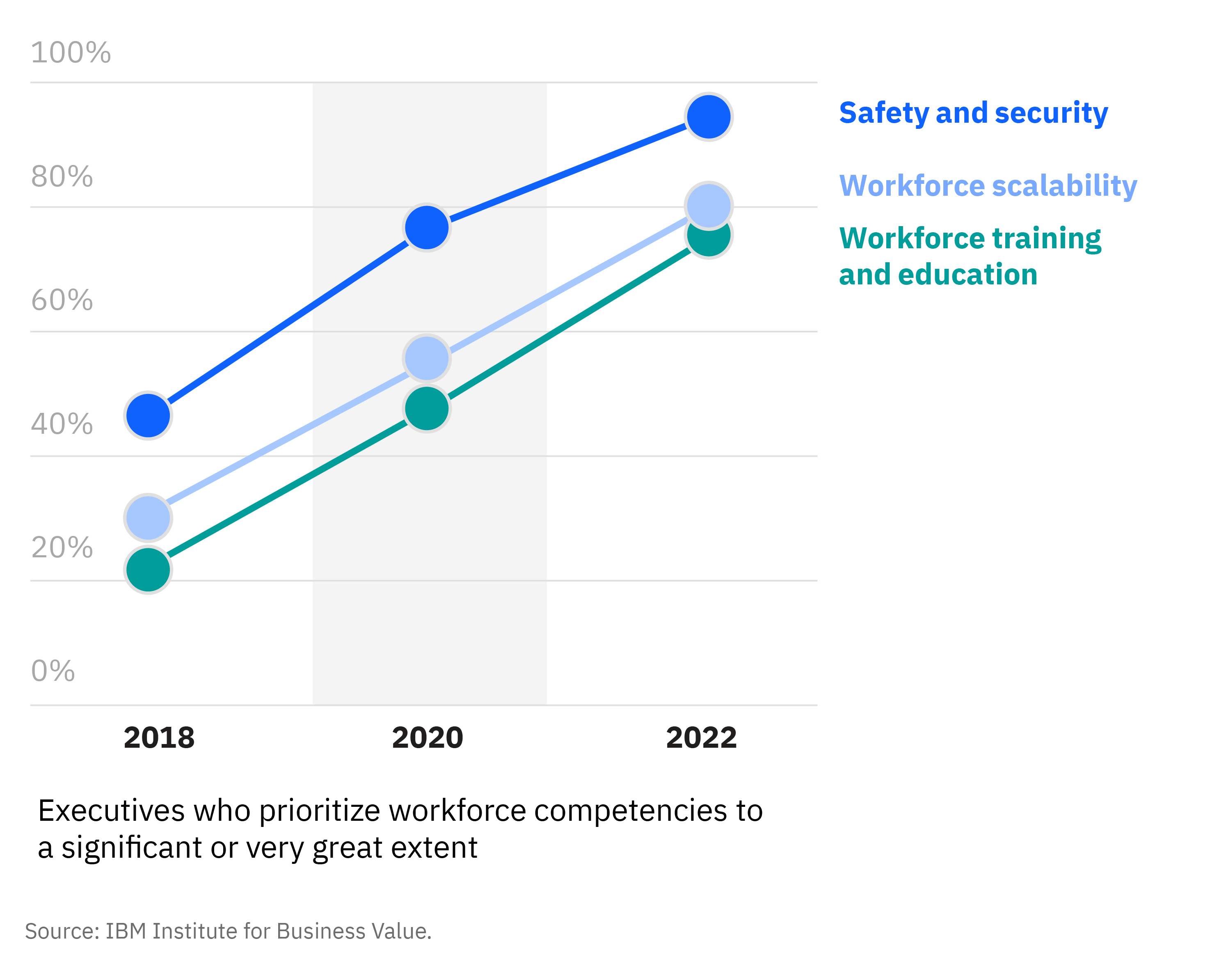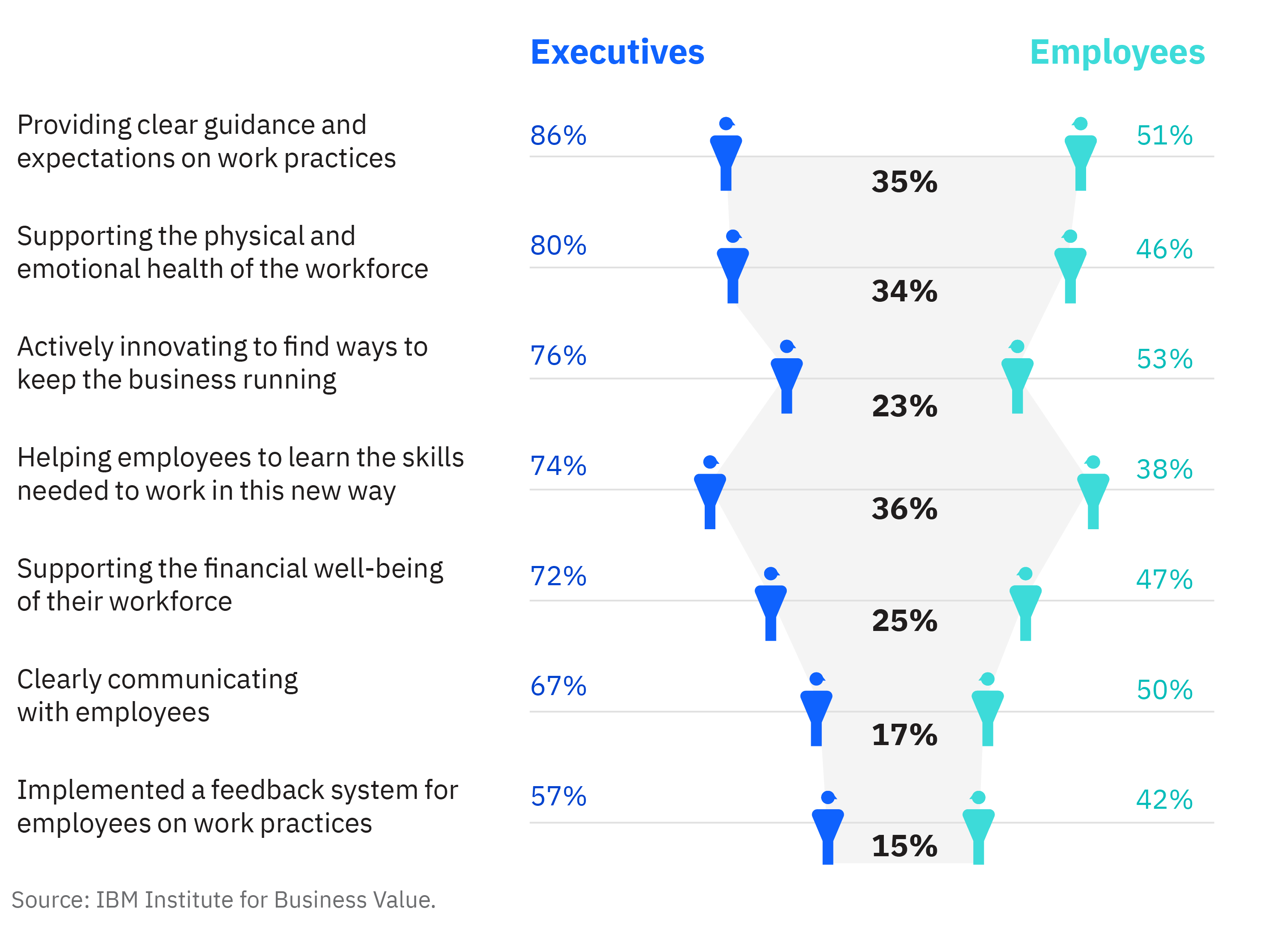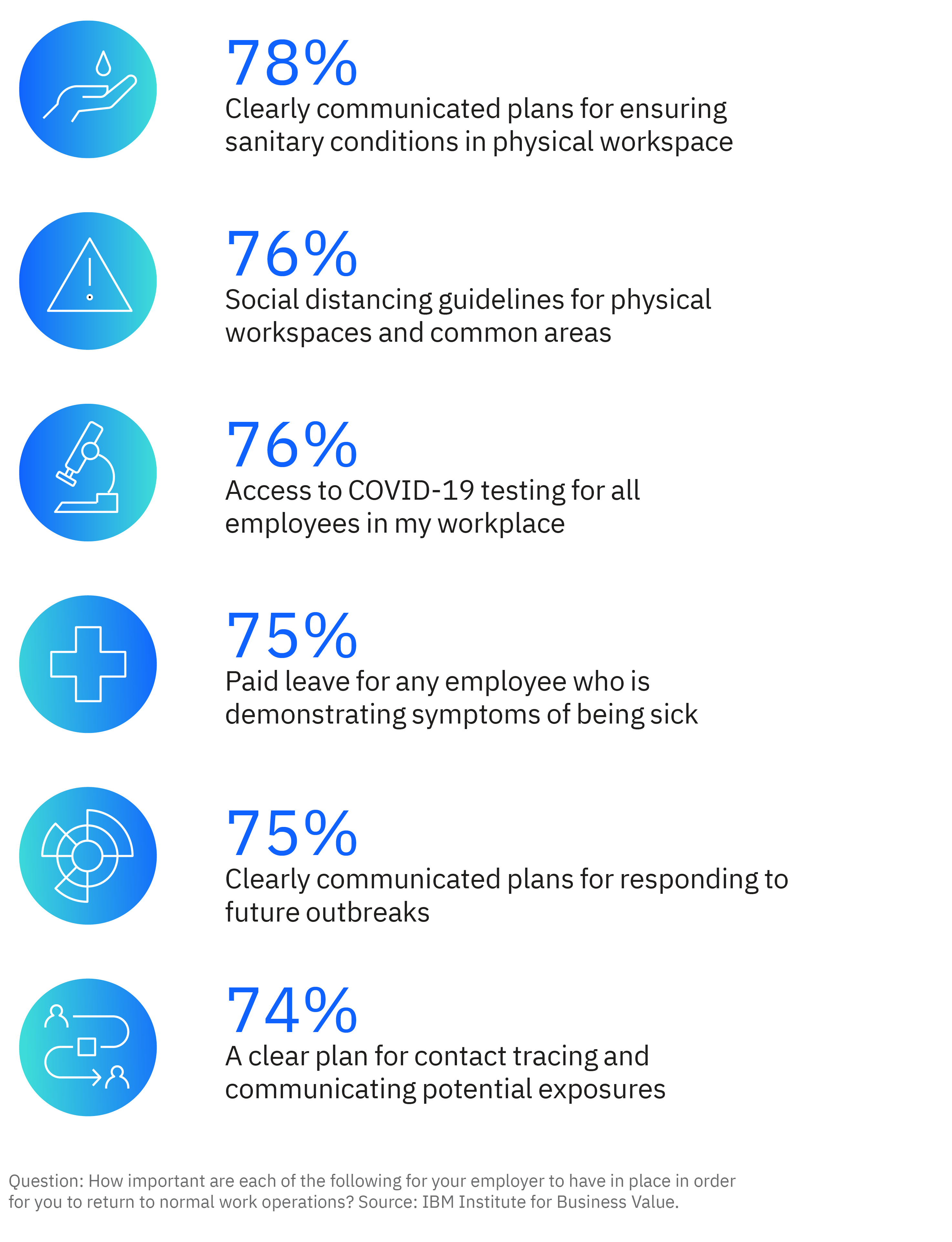Closing the chasm
The COVID-19 crisis wears on, bringing continual business disruption and lockdowns that sometimes stop and start overnight. In this environment, individuals and employers are collectively struggling to return to some semblance of normalcy—finding ways to work, play, and live while staying safe and healthy.
It’s a lot to navigate, and months of stress and anxiety are taking their toll. Families are facing difficult decisions, weighing the dangers of sending children to school against the disruption of remote learning. They’re comparing the health risks of going back to work (or staying at work) with the financial hardship that could come from staying home. And they’re evaluating the tradeoffs between visiting loved ones and keeping their distance—acknowledging the impact extended isolation could have on their mental health. Each situation comes with unique circumstances, making it impossible for businesses to take a one-size-fits-all approach as they move toward building a different normal.
In general, employers significantly overestimate the effectiveness of their efforts to support employees.
For executives, this creates a conundrum. It seems almost impossible to understand each employee’s individual needs—and balance those with rebuilding the business. From digital disruption to supply chain shutdowns, leaders are facing a barrage of threats coming from every direction. As they struggle to stay competitive—or perhaps even solvent—their attention is divided.
In this environment, it’s not surprising that executives think they’re providing sufficient workforce support, whatever it is they’re doing. After all, simply avoiding layoffs may feel like a monumental achievement. But recent research from the IBM Institute for Business Value reveals they may not be doing enough. Ongoing analysis of global consumers and business executives show that there is a deep disconnect between what leaders think their organizations are offering and how employees feel about that support. In general, employers significantly overestimate the effectiveness of their efforts.
To compete in a future defined by disruption and created through crisis, executives need to engage what's known as emotional intelligence or their emotional quotient (EQ).
In an increasingly volatile environment, employees play an essential part in helping organizations adapt and respond to crisis and change. People will be a primary driver of competitive advantage going forward—and their memories will be long. Companies that don’t empathize with their employees—and do the best they can to help them deal with the pandemic—may see a major exodus when the job market recovers. To compete in a future defined by disruption and created through crisis, executives need to engage their EQ and close the chasm between leader and employee perceptions of the support the organization provides.
Dissecting the disconnect
Most executives understand that their people will play a huge part in helping them survive economic turmoil in the coming months and years—and they are prioritizing workforce capabilities accordingly.
In fact, workforce safety and security is the top executive priority for the future, with 92 percent of executives surveyed planning to prioritize this capability over the next two years. And nearly two-thirds of leaders are putting a premium on workforce training and education.
Executives have shifted their focus toward workforce-related competencies

But employees have yet to feel the effect of this renewed focus on their needs. While executives believe they are giving employees the tools, training, and emotional support they need to remain productive, employees largely disagree. For instance, while four in five executives surveyed say they are supporting the physical and emotional health of their workforce, less than half of employees agree. It’s also important to note that fewer than half of employees feel they’re being taken care of financially, and even fewer (38 percent) think their employers are giving them the skills they need to adapt to a different way of working.
Employees and executives have diverging views on employer responses to the pandemic

As more people return to work, employees have a defined set of expectations and demands for their employers—and health and safety is front and center. Nearly 80 percent of employees want clearly communicated plans for ensuring sanitary conditions in physical workspaces, and only 51 percent believe this is something their employers have provided.
Roughly three in four employees want their employers to offer social distancing guidelines, paid sick leave, access to COVID-19 testing, and plans for responding to future outbreaks. Respondents in Brazil and Mexico had very strong demands for protective measures, including contact tracing. Respondents in the US were somewhat less demanding in May and June than they were in April; however, expectations for active protection measures in the workplace rose in July and continued to remain high in August.
Top employee concerns center around health and safety

Closing the chasm
Leaders may feel frustrated that their efforts aren’t being appreciated, especially given everything that’s resting on their shoulders. But it’s not just executives who are under pressure. Employees are walking a tight-rope as they try to balance professional and personal priorities—and, in many regions, they’re keenly aware that there’s no safety net.
In this environment, employees seem to think they don’t register on executives’ radar. Fewer than one in four workers trust their employers to make informed and ethical decisions that consider both the economic implications and the health and well-being of individuals and communities when returning to the workplace. And just over half think their employers are genuinely concerned about employees.
Only 57% of executives surveyed say they have implemented a feedback system for employees to elevate issues and solutions.
Closing this chasm starts with a purposeful focus on empathy, a willingness to investigate creative solutions—and better communication. Only 57 percent of executives surveyed say they have implemented a feedback system for employees to elevate issues and solutions. Learning to listen can help leaders see issues more clearly.
One key lesson executives should take from the pandemic is that their employees should be considered as individuals with unique needs and specific expectations. What will make each person successful varies wildly. But serving individuals is what will improve results for the organization as a whole. To compete in the future, executives must be mindful enough to understand their workers’ needs—and companies must be agile enough to accommodate them.
When a company meets its people’s needs, it can make its employees its most important advocates. And at the end of the day, a company’s efforts—or lack thereof—speak volumes about its values. If the COVID-19 crisis doesn’t inspire an organization to take better care of its people—what will?
Meet the authors
Cindy Anderson, Global Executive for Engagement and Eminence, IBM Institute for Business ValueDave Zaharchuk, Research Director, IBM Institute for Business Value
Anthony Marshall, Senior Research Director, Thought Leadership, IBM Institute for Business Value
Originally published 06 October 2020


